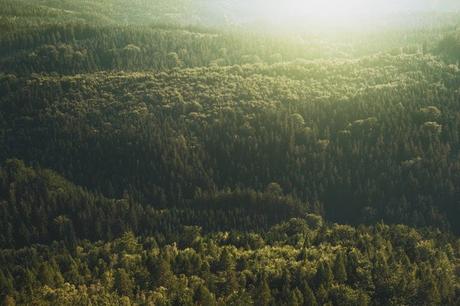World’s forests have become significantly shorter and younger overall due to climate breakdown and the mass felling of trees, an analysis shows. Rising temperatures, natural disasters, and deforestation are taking a heavy toll, according to scientists.
Scientists expect the trend to continue with concerning outcome for the forests’ ability to store carbon and mitigate the climate emergency and for the survival of endangered wildlife depending on rich, ancient forests.

After analyzing over 150 previous studies, it has been found that the death rate of trees has increased, such as doubling in North America and significantly growing in the Amazon. The impact of forest destruction had reduced the old-growth forest area by one-third since 1900, the researchers said.
However, increasing temperatures caused by global heating have resulted in stunted trees and increases deaths among trees by limiting photosynthesis and causing stress. Also, drought, high temperatures, high storm winds, pests, and disease have significant impacts on older trees more, and all are on the rise.
Tom Pugh, a scientist at the University of Birmingham, UK, said: “Our study reviews mounting evidence that climate change is accelerating tree mortality, increasingly pushing the world’s forests towards being both younger and shorter.
“They have been getting smaller and younger over the last century, primarily because of the effects of human land-use change, and disturbances like wildfires and insect outbreaks and droughts. These are things that are increasing in frequency and severity.”
There were exceptions, Pugh said, such as forests in high latitudes: “But in a world that’s generally hotter, more of the world will be covered by forests that are generally shorter.”
“Over the last hundred years we have lost a lot of old forests,” said Nate McDowell, at the US Department of Energy’s Pacific Northwest National Laboratory, who led the analysis. “They’ve been replaced in part by non-forests and in part by young forests. This has consequences on biodiversity, climate mitigation, and forestry.”
The research, published in the journal Science and including analysis of satellite data on the change of land-use, estimated that 12% of forest area had been reduced since 1900 due to the felling of trees by humans. From 89%, the proportion of old-growth forest of more than 140 years old fell to 66% in that time. The researchers were unable to make an exact estimate of how much shorter the woods had become due to lack of data.
The increasing levels of carbon dioxide in the atmosphere could increase tree growth; however, according to the researchers, this happens only in younger forests with abundant nutrients and water. The carbon dioxide benefits to trees are drastically reducing as most forests have limited nutrients and water.
Pugh said the vast majority of forests in the UK and Europe were examples of unnaturally short and young woodlands. “They are not of the stature that many of those forests would have been before humans fundamentally changed them by harvesting at regular intervals and planting new species, in some cases monoculture,” he explained.
Prof Tom Crowther, at ETH Zurich University in Switzerland and not part of the analysis team, said the study was critical: “For a long time, scientists have predicted that elevated CO2 and warming will increase carbon storage in forests that will help to offset climate change.
However, the study adds a growing concern that these factors, along with human disturbance, may, in fact, be decreasing the amount of carbon stored in these ecosystems.
“But it also suggests that, if we can protect the forests that we already have, and allow them to grow to maturity, there is a huge potential for them to capture a lot of additional carbon,” he said.
Prof Simon Lewis at University College London said: “Because old-growth forest is being lost, then on average, across the globe, forests are getting shorter and younger. Yet, counter to this, and what the researchers don’t highlight is that within many old-growth forests the opposite is happening.
“The world’s intact tropical and boreal forests are both globally important as carbon sinks, and are getting larger. The world’s forests currently slow climate change, and while future mortality trends could reverse this, the ideas in the new report don’t change what the world needs to do: stabilize the climate by quickly driving fossil fuel emissions to zero and protect the world’s forests.”
Pugh said the analysis of changing conditions across the world also had implications for protecting forests. “When you’re thinking in conservation terms, it can be quite poignant,” he said. “You might be trying to preserve a [forest] ecosystem that fundamentally cannot continue to exist in the way that it has existed over the past.”


